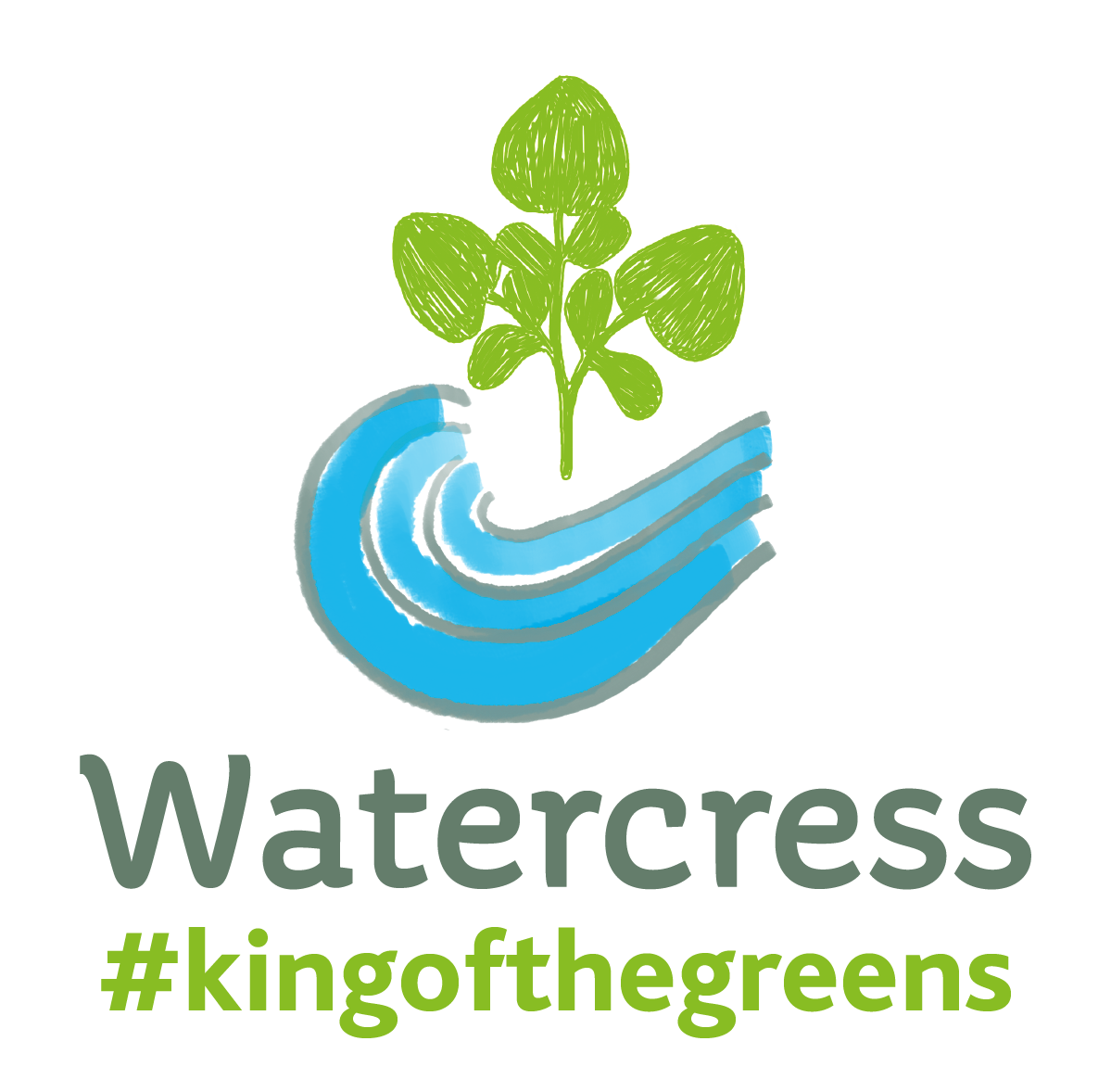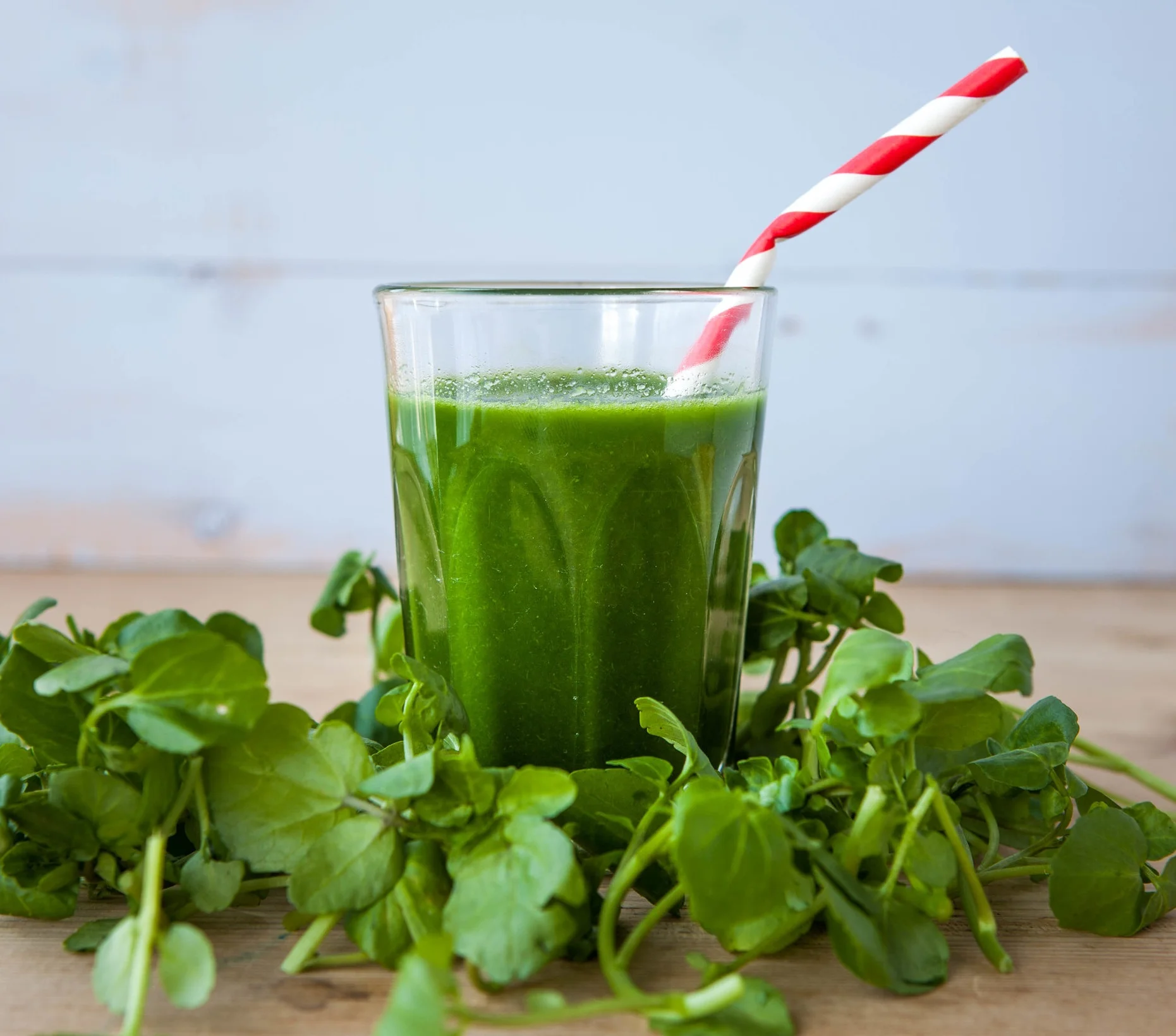Vitamin C and Watercress
Dr Lucy Williamson is a nutritionist who believes in the exceptional quality of our British food produce, and through her work as a lecturer at the University of Hertfordshire, with schools, and one to one consultations, Lucy highlights the importance of including dairy, beef, fish, fruit, vegetables and grains in a balanced diet, following current intake recommendations.
She is also currently developing the ‘food LINKS’ initiative, linking British food producers with the latest scientific research to promote the health benefits of their products. Cue Watercress! Lucy has been working with The Watercress Company to highlight the different roles that the peppery leaf plays in the healthy functioning of the body and its importance in the daily diet. Here Lucy focuses on the high levels of vitamin C that watercress contains and why the body needs it.
Why do we need Vitamin C?
Vitamin C is pivotal in our health. Our immune system, bones, skin & hair, blood vessels, teeth and nervous system are all dependent on it for their normal functioning and each cell in our body requires it to convert our fat stores into energy. We can’t build up stores of Vitamin C and unlike animals and plants, we’ve lost the ability to make our own. (Scientists have always been baffled by a permanent alteration in the genes of humans and guinea pigs, a ‘mutation’, about 30 million years ago, meaning we could no longer make our own Vitamin C) So, we’re totally dependent on our food to provide this water-soluble vitamin, as became evident to sailors in the 15th and 16th Centuries, after suffering the devastating effects of Scurvy. It’s perhaps hard to believe, but Vitamin C deficiency is still the fourth most common nutrient deficiency in the USA.
Symptoms of Scurvy
Scurvy killed more than two million sailors between the time of Columbus’s transatlantic voyage and the rise of steam engines in the mid-19th century. The problem was so common that shipowners and governments assumed a 50% death rate from scurvy for their sailors on any major voyage. According to historian Stephen Bown scurvy was responsible for more deaths at sea than storms, shipwrecks, combat, and all other diseases combined.
Scurvy exacted a particularly gruesome death. The earliest symptom—lethargy so intense that people once believed laziness was a cause of the disease—is debilitating. Your body feels weak. Your joints ache. Your arms and legs swell, and your skin bruises at the slightest touch. As the disease progresses, your gums become spongy and your breath fetid, your teeth loosen, and internal hemorrhaging makes splotches on your skin. Old wounds open; mucous membranes bleed. Left untreated, you will die, likely from a sudden hemorrhage near your heart or brain.
Watercolor illustrations of scurvy symptoms by Henry W. Mahon, a ship surgeon on the Barrosa, a British convict ship, ca. 1841.
The National Archives UK
These days we associate vitamin C and citrus fruits as a cure for scurvy, but it took many years for the connection to be made and for thousands of lives to be saved. To understand more about the journey to a cure read The Age of Scurvy. It was however, largely due to the British Navy which noticed that if their sailors were given oranges, lemons or limes they recovered from the symptoms of scurvy in nearly every case. As a result, from the beginning of the 19th century, the British Navy routinely supplied its sailors with limes—chosen instead of lemons because Britain controlled colonies that grew limes - and the incidence of scurvy dropped dramatically. Not only that, British sailors picked up the nickname ‘limey’ from the process and which two centuries later is still how the Brits are referred to in some cultures.
Vitamin C and Watercress
So why is Vitamin C needed by so many systems in our body?
Its properties are based on its ability to assist in many chemical reactions essential in our metabolism. It activates the enzymes required to make collagen – the basic building block of our skin, bones, teeth and hair. Enzyme activation by Vitamin C is also required to make hormones, particularly those which help us to respond to stress and to make neurotransmitters, the chemicals which send signals between nerve cells.
Vitamin C and Our Immune System
Watercress is a fabulous source of many nutrients, but it’s surprisingly high in Vitamin C - 80g of watercress gives you 50 mg of Vitamin C, more than the recommended daily amount of 45mg; 10mg more than in an orange of the same weight! (an 80g orange contains 40mg Vitamin C). This is great news! You can whizz up a smoothie for two, using 80g of British watercress, and you’ll benefit from even more Vitamin C than using a whole orange, not to mention its other antioxidants, iron, Vitamin A, good protein levels…. the list goes on. Check out the delicious smoothies tried and tested by The Watercress Company.
Vitamin C is well known for helping us resist infections like the common cold, but how?
Our immune system has a high demand for energy due to constant cell multiplication and their movement to wounds & cuts or to potential infection sites around the body. Vitamin C is pivotal here in providing this energy source through activating the enzyme, Carnitine, required in this process. Research has also demonstrated its essential role in enabling immune cells to kill bacteria and to recover afterwards and also in the chemical signalling pathway which attracts immune system cells to the area in the body that needs them.
Vitamin C as an Antioxidant
Then there’s its antioxidant role. Our everyday metabolism uses oxygen. By-products of this process are known as free radicals, which can cause damage to cells in a process known as Oxidative Stress. We produce antioxidants all the time in our cells which remove these radicals, keep our cells healthy and slow down the ageing process. Generally, our in-built antioxidants keep Oxidative Stress under control but if we’re exposed to stressors for a longer period of time which can happen for example during illness, with exposure to pollution, or during intense physical exercise, our antioxidant need is higher, therefore additional antioxidants from our food are always beneficial. We require Vitamin C to make many of our own antioxidants (the same goes for Vitamin E) but it also has its own antioxidant role. Research is now showing Oxidative Stress to be a precursor to chronic illness such as heart disease and cancer; oxidation of cholesterol ‘packages’ within the blood stream causing damage to blood vessel walls and oxidation of cell DNA being a possible precursor to cancer.
Vitamin C is crucial from Sport to Senior years
The detail above explains why Individuals who are more susceptible to infection, or the effects of Oxidative Stress, or have a higher requirement for energy, have a high demand for Vitamin C. This is particularly the case for those doing intense physical exercise - Vitamin C being essential in maintaining optimal immune function during and after endurance sport, those with inflammatory illness such as Type 2 Diabetes and the elderly who are prone to nutrient deficiencies, especially iron.
Vitamin C and Iron Absorption
Watercress is a source of iron, actually containing more than spinach and other leafy greens. Unlike iron from meat and fish sources (known as haem iron) which is readily absorbed by the body, iron from plant sources (non-haem iron) has to be transformed by Vitamin C into the haem form before it can be absorbed. This is crucial for those following a vegetarian or vegan diet in order to prevent iron deficiency. Worryingly, our latest UK National Diet and Nutrition Survey (NDNS) shows nearly 50% of teenage girls to have an iron intake lower than the recommended daily amount. This age group have a particularly high demand for iron due to puberty and growth - with the trend towards more plant-based eating, understanding the need for Vitamin C in the diet becomes extremely important. So, watercress, being a rich source of vitamin C along with its iron content, is a fabulous leafy green to ensure iron absorption. Blitzing it in a smoothie is a great way to benefit from this whether young and enjoying more plant-based eating or elderly, susceptible to iron deficiency due to long term medications and in need of easy to swallow, nourishing food. Using delicious watercress smoothies to boost iron stores also avoids the nausea that can often be an undesirable side effect from iron supplements in those who are susceptible to deficiency.
It’s also worth noting that Vitamin C is not a stable vitamin – its levels start to decline with transport time, food preparation and cooking, as it’s water-soluble. Fortunately, The Watercress Company ensure their watercress is in transit for the shortest possible time, being less than two days from picking to supermarket shelf. Even the watercress they farm in Florida to supply our UK market through the winter, when we can’t grow it here, will have been harvested less than 3 days before it appears on our shelves…. Better still, the watercress is shipped using spare space on Virgin Atlantic planes!
For optimum health including gut health, a balanced diet should contain a good variety of many fruits and vegetables. However, adding watercress into your weekly shop, will go a long way to promoting your long-term health!
If you need inspiration as to how to incorporate more watercress into your diet try some of these fabulous recipes.





